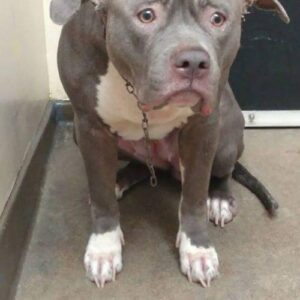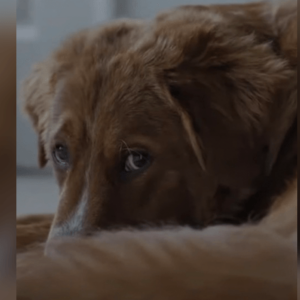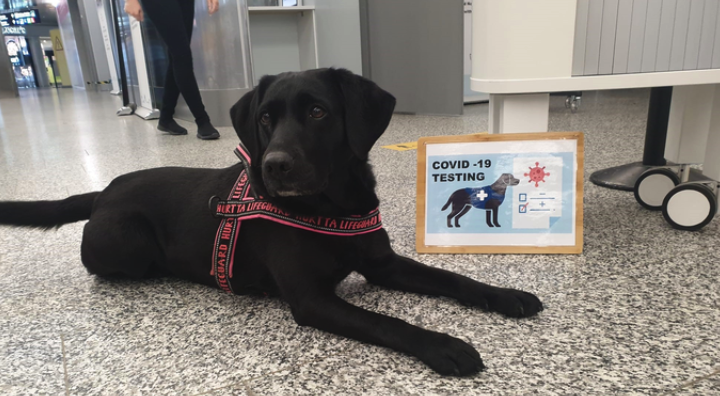
Dogs have been trained to detect narcotics, explosives, and even cancer. A new study also discovered that COVID-19 may be detected simply by sniffing skin swabs.
A study released last week indicated that when four sniffer dogs were trained to detect whether or not a person has COVID-19, the canines were 92 percent accurate.
They applied the research to a real-world environment where they can properly identify passengers who are COVID negative.
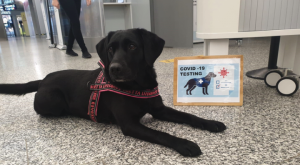
In a news release, Anu Kantele, professor of infectious diseases and head physician at the University of Helsinki and Helsinki University Hospital, said, “Scent dogs might be a vital tool for reducing viral spread during a pandemic, serving for example at air and seaports.”
“Such a dependable, low-cost technique to swiftly screening a large number of samples or identifying passing virus carriers from a huge crowd is valuable, especially when testing capacity using older procedures is limited.”
Since the beginning of the epidemic, several experts and organizations have speculated that dogs’ greater sense of smell might aid in the rapid identification of COVID-19 infections.
Several universities even began training dogs to detect the virus’s aroma. However, few studies have put this capacity to the test in a real-world scenario.
Researchers initially taught a group of canines to detect COVID-19 samples, then tested their abilities in a laboratory environment before putting them to the ultimate test: taking the dogs to an airport to screen people.

In a news release, Anu Kantele, professor of infectious diseases and head physician at the University of Helsinki and Helsinki University Hospital, said, “Scent dogs might be a vital tool for reducing viral spread during a pandemic, serving for example at air and seaports.”
“Such a dependable, low-cost technique to swiftly screening a large number of samples or identifying passing virus carriers from a huge crowd is valuable, especially when testing capacity using older procedures is limited.”
Since the beginning of the epidemic, several experts and organizations have speculated that dogs’ greater sense of smell might aid in the rapid identification of COVID-19 infections.
Several universities even began training dogs to detect the virus’s aroma. However, few studies have put this capacity to the test in a real-world scenario.
Researchers initially taught a group of canines to detect COVID-19 samples, then tested their abilities in a laboratory environment before putting them to the ultimate test: taking the dogs to an airport to screen people.
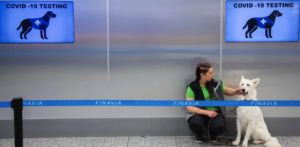
The four dogs used in this investigation — three Labrador retrievers called Silja, Rele, and Kosti, and one white Shepherd named E.T. — had all done scent work before.
They were taught with samples given by inpatients and outpatients from Helsinki University Hospital.
A skin sample was a strip of gauze swabbed on the participants’ neck, throat region, forehead, and wrists.
The dogs would display their handler a signal picked upon during training to indicate a good patient.
More than 10,000 tourists and airport personnel took part in the experiment between September 2020 and the end of April 2021, with the dogs detecting 48 of them as positive for COVID-19.
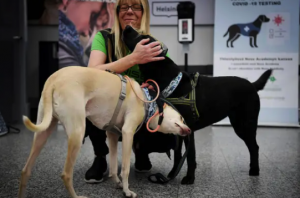
Out of this vast sample size, 303 passengers or airport staff volunteered to participate in the validation section of the experiment, taking a PCR test and providing a skin swab for the dogs to sniff.
The dogs were shown to be 98.7 percent accurate in determining if a sample was negative for COVID-19 using data from 303 humans.
“Our research team will continue to investigate how scent dogs may best benefit our community.” “We believe that our recently published study will assist to allocate money for the development of this new ‘tool,’” said Anna Hielm-Björkman, chief of the DogRisk research group and one of the study’s authors, in a press release. “There are numerous additional disorders where study could benefit from these canines’ extraordinary sense of smell.”
Please SHARE this story with your friends and family.
